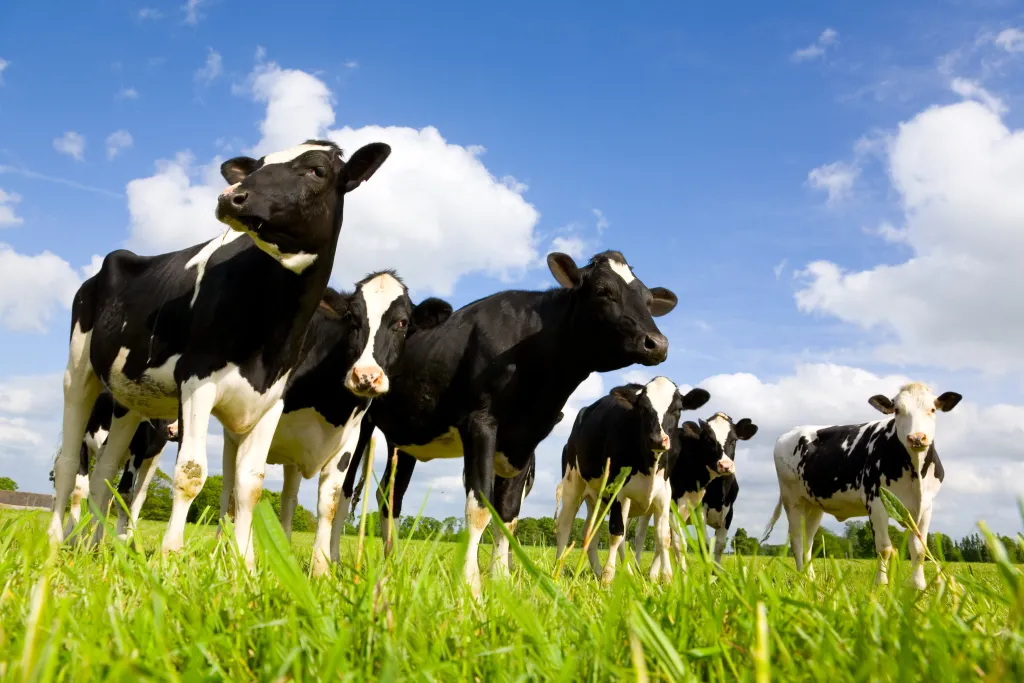June 1 marks World Milk Day and the kickoff of National Dairy Month. According to the USDA Economic Research Service, in 2020 more than 9 million dairy cows produced 223.2 billion pounds of milk in the United States.
On World Milk Day, we’re highlighting the work Land-grant Universities conducting dairy research and Extension education with support from USDA’s National Institute of Food and Agriculture (NIFA).
Dairy farmers who adopt management-intensive grazing practices can better utilize their pasture resources and realize significant savings in stored feed costs, as evidenced by the experience of Hilda Fisk Haines and Steve Haines, who operate Fisk-Haines Farm in Danby, Vermont. They milk 80 Holsteins and manage approximately 250 acres. Several years ago, they turned to the University of Vermont Extension for guidance on rotational grazing.
By 2018, the Fisk-Haines Farm's grazing system covered 60 acres and their season savings totaled $44,000. These savings were thanks to the 36,400 pounds of grain, corn silage and haylage their cows no longer needed each week. "This is the cheapest milk I've ever made. It has changed our breakeven point," Hilda Fisk Haines said.
Alabama Extension at Alabama A&M University has spent nearly two decades educating small ruminant farmers about best management practices, particularly when it comes to animal health. Enhanced herd health leads to greater sustainability, and it enables sheep and goat owners to keep more of the money they earn from selling animal products such as fiber, milk, cosmetics and meat.
Participants in the Alternative Livestock Production and Pet Ownership program attended workshops and hands-on demonstrations across the state. These educational activities focused on developing best health management practices such as how to reduce gastrointestinal parasitism, implement biosecurity measures to safeguard sheep and goat herds, and how to properly dispose of unwanted or unused animal medication.
More than half of the participating producers said that after implementing healthy management practices, they experienced a decline in animal illnesses and deaths, improved herd health efficiency in their management systems and increased revenue profits ranging from $5,000 to more than $51,000 for the year.
A variety of factors can influence a cow’s milk production. In Texas, two of these factors are heat stress and reproduction. External heat accumulates from solar radiation, high ambient air temperature, and high relative humidity, causing a cow’s body temperature to increase. This has an adverse effect on both reproduction and milk production. Texas A&M AgriLife research scientists and Texas A&M AgriLife Extension specialists, as well as their counterparts across the South, have developed effective heat-abatement (cooling) options that are part of a broader effort to maintain a comfortable environment for dairy cows.
As a result, more than 90% of the dairies (435,000 dairy cows) in Texas have adopted some form of heat-abatement method in their operation. The change in net returns for heat-abatement programs in Texas was estimated at $29 per cow, or $12.7 million in 2019. Adoption of breeding programs and heat abatement has resulted in higher pregnancy rates and an additional $41.4 million in annual benefits for milk producers, bringing the total estimated benefit to $54.1 million.

